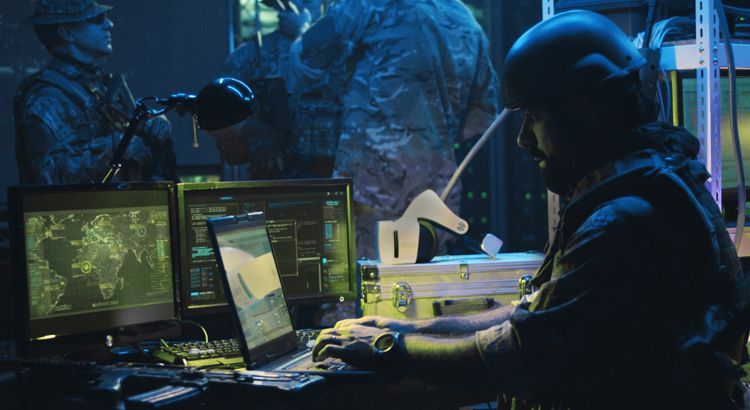
Can GPS be Trusted? Part 1
Alan Simmonds
October 3, 2018
GPS is Everywhere
Most of us don't think of GPS on a daily basis even though the technology has quickly become a quiet necessity in our lives. A vast majority of us walk around with an active GPS receiver in our pocket. The modern cellphone has been equipped with a tiny GPS receiver ever since the FCC mandated its use for location by rescue workers and 911 calls. We mostly take its presence for granted even when it is accessed by our favorite apps. Our GPS location allows us to navigate, browse the local big chain store inventory, tag our location on photos, get local news, and find our parking spot.
Similarly, the accurate navigation from GPS is also critical for efficient operation of commercial and military vehicles, aircraft, ships, UAVs, missiles, and smart bombs.
GPS Alone Cannot be Trusted!
We generally have pleasant experiences with GPS in our modern phones. With the right software, it gets you from A to B without any issues. However, occasional GPS dropouts do occur, leading to a “loss of GPS” or similar message from our navigation software, for instance, when driving in a tunnel. The fact that dropouts occur should not be surprising when you consider the technology.
GPS satellites orbit at an altitude of about 12,500 miles and each satellite has the radio power equivalent to a conventional light bulb. That results in a minuscule signal strength at the GPS receiver, which makes it very susceptible to radio noise, attenuation, and reflection from tall buildings. It also makes it very easy for attackers to jam with simple, low cost radio transmitters.
Back in 2013, Newark airport was inadvertently hit by a GPS denial attack when an employee, wanting to hide his company vehicle movements from his boss, was driving in the area with a GPS jammer that could be obtained for as little as $100.
The GPS signals are also at risk from legitimate terrestrial transmitters. In the US, the FCC is responsible for keeping the weak signal satellite bands separate from terrestrial ones. But even so, in 2011 a 4G LTE wireless company called LightSquared requested the terrestrial use of spectrum so close to the GPS band that it put the whole network at risk.
Worst still, commercial GPS receivers are susceptible to GPS spoofing attacks. Attackers can connect a strong transmitter to a GPS simulator programmed to fool a target GPS receiver into thinking that it is somewhere it isn't. An infamous headline of such a spoofing attack was the capture of a US RQ-170 Sentinel UAV by the Iranian government in 2011. This was allegedly done by sending the UAV strong false GPS signals to make it believe it was flying over a friendly airfield instead of hostile territory.
GPS Location
A GPS receiver needs to know where each GPS satellite is in space at any given moment in time so that a GPS “fix” can be obtained. If three or more satellites are within view and being tracked, a GPS receiver is able to obtain its location via triangulation.
In the graphic below, if the distance to satellites A, B and C from the user’s GPS receiver is known, as well as the satellite positions, then the location of the GPS receiver can be calculated through the intersection of circles projected at those distances. Instead of circles in two-dimensional space, four spheres in three dimensions are used so that both location on earth and height above ground can be calculated. Usually, many more than four satellites are in view and the more that are visible, the better the accuracy of fix can be obtained.

GPS Time
Surprisingly, it's a GPS receiver's ability to provide very accurate time, not navigation, that is often the more critical feature for a number of today's systems.
The relative position of each satellite and any receiver is measured using ranging signals and navigation messages. The distance is calculated by multiplying the flight time by the speed of light. The flight time is determined by timestamping each message with a global “GPS time” at the satellite and subtracting that from the current “GPS time” at the receiver. To generate these timestamps, each GPS satellite needs a way of knowing the time of day to a very high accuracy.
This is achieved by equipping the satellites with multiple atomic clocks, each calibrated and accurate to within 1ns, or 1 billionth of a second, of the global “GPS time”. Even the tiny effects of relativity are considered in the clock timebases. On the ground, a GPS receiver can utilize this information to provide a local clock that is accurate within tens of nanoseconds of the Universal Time standard.
 Accurate GPS time is crucial for emerging military tactical radios
Accurate GPS time is crucial for emerging military tactical radios
At first sight this level of accuracy may appear to be overkill – however GPS time is a critical component for many applications, for example:
- Wireless spectrum sharing: as the wireless spectrum becomes crowded, many frequencies, such as those used by cell phones, are concurrently shared between multiple active transmitters. This is done by allocating short time slots to each transmitter on a repetitive cycle. Each cell tower or base station uses GPS time, converted to Universal Time, to synchronize this operation and prevent collisions. As a byproduct, your cellphone’s clock is usually very accurate.
- Frequency hopping and encryption: in emerging advanced military tactical radios continually changing, the transmitter frequency can prevent eavesdropping and mitigates against malicious jamming
- Bank finance and stock exchange transactions: these transactions need to be accurately timestamped as currency and stock values change very quickly
- Power plants: analysis of status and failures as they progress along the transmission lines
- Seismic monitoring: for tracking earthquake shock-wave propagation
Trust in GPS Must be Regained and Assured
Since GPS is omnipresent we rarely consider the implications of its failure. Loss of GPS on our phone could be a major inconvenience (who carries a map in their car these days?), but loss of navigation and timing in industrial, avionics and military applications can be life threatening.
GPS is so critical that it is considered a SPOF (Single Point of Failure) in many of today’s military systems, meaning that its loss results in complete failure of the system. For these systems, position, navigation and timing must be maintained through multiple means. Commercial GPS alone cannot be trusted, but read on in Part 2 to see how we can still use GPS to help assure trust in position, navigation and timing (PNT) systems.







 Enabling a Trusted Domestic Microelectronics Ecosystem
Enabling a Trusted Domestic Microelectronics Ecosystem